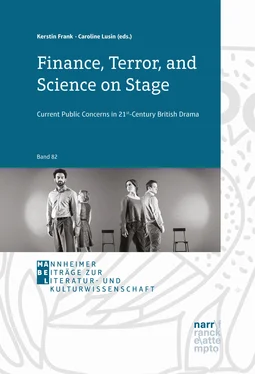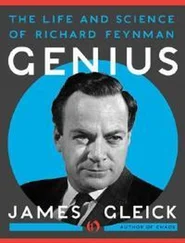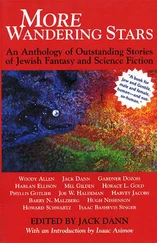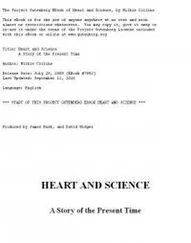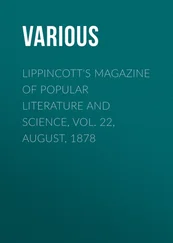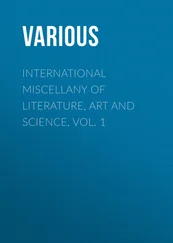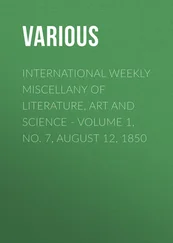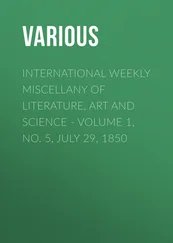Finance, Terror, and Science on Stage
Здесь есть возможность читать онлайн «Finance, Terror, and Science on Stage» — ознакомительный отрывок электронной книги совершенно бесплатно, а после прочтения отрывка купить полную версию. В некоторых случаях можно слушать аудио, скачать через торрент в формате fb2 и присутствует краткое содержание. Жанр: unrecognised, на английском языке. Описание произведения, (предисловие) а так же отзывы посетителей доступны на портале библиотеки ЛибКат.
- Название:Finance, Terror, and Science on Stage
- Автор:
- Жанр:
- Год:неизвестен
- ISBN:нет данных
- Рейтинг книги:5 / 5. Голосов: 1
-
Избранное:Добавить в избранное
- Отзывы:
-
Ваша оценка:
- 100
- 1
- 2
- 3
- 4
- 5
Finance, Terror, and Science on Stage: краткое содержание, описание и аннотация
Предлагаем к чтению аннотацию, описание, краткое содержание или предисловие (зависит от того, что написал сам автор книги «Finance, Terror, and Science on Stage»). Если вы не нашли необходимую информацию о книге — напишите в комментариях, мы постараемся отыскать её.
Finance, Terror, and Science on Stage — читать онлайн ознакомительный отрывок
Ниже представлен текст книги, разбитый по страницам. Система сохранения места последней прочитанной страницы, позволяет с удобством читать онлайн бесплатно книгу «Finance, Terror, and Science on Stage», без необходимости каждый раз заново искать на чём Вы остановились. Поставьте закладку, и сможете в любой момент перейти на страницу, на которой закончили чтение.
Интервал:
Закладка:
Similarly, the play’s use of techniques deriving from the Theatre of the Absurd is more muted than in the earlier absurdist dystopias and has therefore often been overlooked. Reviewers have regularly denounced the characters as “two-dimensional illustrations of ‘types’ rather than complex individuals with rich stories” (Bowman; cf. also Taylor) and have bemoaned the impossibility of audience identification with them (cf. Bowman). The connection with the figures put on stage by the Theatre of the Absurd looms large here, especially as in contrast to other theatrical forms working with reduced characters (like for instance farce) 13 has a strong disturbing effect at the same time. As is typical of the 2000s absurdist dystopias (cf. Tönnies, “Impossibility”), the spectators are at a certain distance from the characters but cannot really escape from the impact of the play as a whole. Fittingly, lexical items from the word field of ‘unease’ abound in the reviews (cf.e.g. McGinn; Benedict; anon.), and as in Michael Billington’s statement quoted at the beginning of this paper, there is often a sense that this reaches beyond concrete grievances to a far more fundamental and irrational sense of being under threat.
The recurrent nightmare, which is shared by most of the people on stage and starts off the first three acts of the play, strengthens this indefinable, Pinteresque menace, especially as the Laurie Anderson song “Someone Else’s Dream” indicating this dream’s presence runs for a shorter period each time (cf. 7, 13, 72). This creates a deepening sense of time running out (cf. Megson 51), mirrored in Ruth’s ominous impression that it “is getting darker”, which seems to apply to far more than the bad weather (68). This effect is still intensified by the uncanny recurrence of the number 13, which turns into a veritable leitmotif from the title of the play onwards (cf. Megson 50). The instances themselves are often unimportant and seemingly coincidental (as for instance the number of steps listed in the Nuclear Non-Proliferation Treaty, 41), but the number’s connection with the nightmare from the very beginning of the play onwards (with the dreamers waking up in shock at 7.13 am each time) foregrounds its conventional ill-omened connotations. Moreover, at least readers of the play will certainly notice that the killing of eleven-year-old Ruby by her own mother – reminiscent of Ionesco in its pointedly unrealistic staging – takes place in the 13 thscene of act two. As in the whole of the Theatre of the Absurd, the vagueness of the perceived threat heightens its intensity and broadens its scope, potentially widening it to the fundamental sense of exposure inherent in the human condition “in a world of shattered beliefs” (Esslin 23).
It fits in well with this that the overall approach of the play is deliberately irrational, repeatedly leaving events unexplained by a logical context. In the last scene of the first act for instance images of “the people of London” dancing in the streets blend into “a nuclear blast” before the blackout ending the act, and the stage directions pointedly refuse to give a clear-cut explanation: “The student party after the protest maybe, or a dream, a memory …” (40) – or indeed, one may add, a sudden direct insight into the recurrent nightmare, about which the audience otherwise receives only little information (34, 42). Generally, 13 has a pronounced episodic structure, which has been criticised as “meandering” (Orr) and lacking “focus” (Shuttleworth). The suspension of conventional narrative logic is highlighted by the increasing interconnections that establish themselves between the different narrative strands seemingly of their own accord, especially through scenes blending into each other, taking place simultaneously and/or through the actions and statements of different characters mirroring each other (cf.e.g. 80–5, 90). This can create a “spooky” (Sierz), “ominous” (Taylor) sense of a world following its own strange rules, completely “out of harmony” with human rationality (Esslin 23, cf. also 24), as is often the case in the Theatre of the Absurd. Just as Martin Esslin famously observed about that theatrical form, 13 makes the audience experience its unsettling world directly instead of arguing about it rationally (cf. 24–6). In the first production of the play at the National Theatre, this effect was also supported by the stage design. While Bartlett’s first stage direction in the published playtext states ambiguously that “[t]he play should be performed with a circle” (6), the production worked with a large black cube structure. Critics have stressed the intense effect of this design and its role in the overall atmosphere created by the play, calling the structure on stage “ominous” (Orr) or “sinister” (McGinn) and stressing its “abstract” (ibid.) quality that refused to mirror any of the contemporary details and concrete London locations which feature in the plot. Yet again, one can thus observe a parallel with the experiential approach of the Theatre of the Absurd, where intense stage images play a pivotal role as well (cf. Esslin 25f.).
What distinguishes 13 from the Theatre of the Absurd and may well have contributed to the reviewers’ tendency to judge (and criticise) it according to the rules of realist drama is its “immense scale” (Bowman). Written for the large stage of the Olivier theatre and using the traditional number of five acts (though refusing to keep to the even, symmetrical structure conventionally associated with this form), the play demands recognition much more graphically than the minimalist absurdist dystopias of the 2000s (and probably also more than Bartlett’s 2010 five-act play Earthquakes in London , which was staged at the National’s much smaller Cottesloe Theatre). In this respect, 13 seems to conform to the demands of the so-called ‘Monsterists’ – a group of young playwrights of which Bartlett was not a member but whose 2005 “Manifesto” called for the “elevation of new theatre writing […] to the main stage”, including a “[l]arge scale, large concept and, possibly, large cast” (Eldridge). With this context of confident assertiveness, it is not surprising that Bartlett’s play has been situated in the tradition of state-of-the-nation drama (cf. Megson 52), potentially even widened to “state-of-the-globe” (Trueman). From this angle, one might indeed expect more clear-cut points, a more straightforward plot and greater audience involvement than Bartlett chooses to provide.
4. The Play’s Central Conflict about Political Power
With its approach of dystopian distancing and absurdist abstraction and irrationality, 13 definitely manages to push a critical attitude to political power and social inequality past the smokescreen of rhetoric and also beyond the widespread focus on concrete case studies. Like other absurdist dystopias, the play poses fundamental questions about the validity of power and the values that it should be based on. In the course of the first three acts Ruth, who has been Prime Minister for two years at this point (107), and John, who has gradually turned into the leader of the popular protest movement after first appearing more like a social outcast (7f., 22), increasingly come to embody two diametrically opposed positions in this respect. After the interval, the fourth act then leads to a personal confrontation between these two central characters in what is by far the longest scene of the play (IV.9). On the face of it, this exchange is about John trying to persuade Ruth not to take part in the American attack on Iran, but it is clear throughout that the real confrontation is about concepts of political power and their moral implications. For part of the discussion, the binary opposition is complemented by Stephen, whom Ruth has asked to join them “for a while”, because – in keeping with the uncanny interlocking of different plot strands in the play – not only Ruth and Stephen but “all [of them] know each other” (106). As transpires in the course of the scene, this does not simply refer back to endless political debates in the past, before John suddenly vanished, but the reason for his disappearance actually seems to have been his presence at and potential involvement in the death of Ruth’s son. At the same time, the spectators already know from an earlier scene where Stephen chances upon one of John’s speeches in the park that the two of them used to be lecturer and student (65) and (as is highlighted when a speech by John is intercut with Stephen’s Oxford Union polemic against the Iranian government, 88–90) that their opinions are diametrically opposed to each other.
Читать дальшеИнтервал:
Закладка:
Похожие книги на «Finance, Terror, and Science on Stage»
Представляем Вашему вниманию похожие книги на «Finance, Terror, and Science on Stage» списком для выбора. Мы отобрали схожую по названию и смыслу литературу в надежде предоставить читателям больше вариантов отыскать новые, интересные, ещё непрочитанные произведения.
Обсуждение, отзывы о книге «Finance, Terror, and Science on Stage» и просто собственные мнения читателей. Оставьте ваши комментарии, напишите, что Вы думаете о произведении, его смысле или главных героях. Укажите что конкретно понравилось, а что нет, и почему Вы так считаете.
